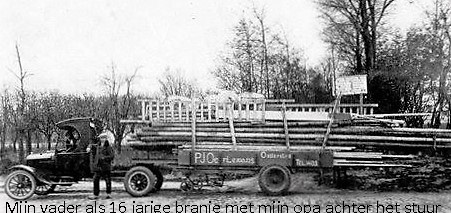A low residue diet regimen is a specialized eating strategy that intends to decrease the quantity of fiber and also undigested food in the gastrointestinal (GI) tract. This type of diet plan is usually suggested for people with particular medical problems or those that have undergone certain medical procedures. By restricting the consumption of specific foods, a reduced residue diet regimen helps to decrease bowel movements and lower feces quantity, offering alleviation for various GI-related signs.
A reduced residue diet is specifically created to be gentle on the digestive system. It limits foods that are high in fiber, such as entire grains, nuts, seeds, and raw vegetables and fruits. Unlike testoy mk other dietary strategies, a reduced deposit diet regimen focuses on consuming conveniently absorbable and also absorbable foods with low fiber content.
Who Should Comply With a Reduced Residue Diet?
A low residue diet is typically suggested for individuals with particular medical problems, including inflammatory bowel disease (IBD), Crohn’s condition, diverticulitis, ulcerative colitis, and radiation enteritis. It might likewise be suggested for those recouping from certain gastrointestinal surgical procedures, such as digestive tract resection or colostomy.
The primary objective of a low residue diet is to provide temporary relief and provide the GI tract time to recover. By minimizing the amount of fiber and also roughage in the diet regimen, the gastrointestinal system experiences much less pressure and also has the ability to recoup better.
It is necessary to note that a reduced deposit diet plan is usually not a lasting option. Once the underlying condition or surgical recuperation has enhanced, individuals might progressively reintroduce high-fiber foods right into their diet under the advice of a medical care professional.
What Foods Are Enabled on a Low Deposit Diet Regimen?
A low residue diet mostly consists of easily digestible foods that are gentle on the GI tract. Below are some examples of foods that are usually permitted on a reduced deposit diet:
- Refined grains, such as white bread, pasta, as well as rice
- Well-cooked vegetables without skin or seeds, such as peeled as well as boiled potatoes or carrots
- Tender, lean meats, such as chicken, turkey, or fish
- Eggs
- Canned or prepared fruits without skin or seeds
- Milk items, such as milk, yogurt, as well as cheese
- Smooth nut butters
- Non-gas-producing liquids, such as clear broth or strained juices
These foods are simpler to absorb as well as do not leave a considerable amount of undigested deposit in the GI system. It is important to bear in mind that individual dietary demands may vary, as well as it is always best to speak with depanten gelis a healthcare specialist or licensed dietitian to create an appropriate low deposit diet regimen plan based upon particular health requirements.
Foods to Prevent on a Low Residue Diet Regimen
To effectively lower fiber intake and also lessen bowel movements, people following a reduced residue diet must stay clear of certain foods. These include:
- Entire grains, such as whole wheat bread as well as brown rice
- Cereals with included nuts, seeds, or dried fruits
- Raw fruits and vegetables
- Legumes, such as beans and also lentils
- Nuts and also seeds
- Crunchy or fibrous treats, such as popcorn or pretzels
- Fatty as well as fried foods
- Caffeinated as well as carbonated drinks
These foods are high in fiber as well as can irritate the GI tract, creating raised defecation as well as discomfort. By avoiding these foods, people can efficiently handle their symptoms and promote recovery in the digestive system.
Meal Preparation and also Tips for a Reduced Residue Diet Regimen
Developing meal plans that adhere to a low deposit diet plan can be challenging, but with mindful planning and the best strategy, it is possible to appreciate a selection of flavorful meals. Here are some useful pointers for dish preparation on a reduced deposit diet regimen:
- Concentrate on tiny, constant dishes to ease digestion
- Prepare vegetables up until they are soft as well as quickly mashed
- Choose lean healthy protein resources to lessen gastrointestinal strain
- Trying out natural herbs and also seasonings to enhance flavor without including fiber
- Go with cooking approaches such as boiling, steaming, or baking instead of frying
- Stay moistened by consuming plenty of water throughout the day
- Take into consideration maintaining a food journal to track triggers as well as identify problem foods
Remember, it is critical to function very closely with a medical care professional or authorized dietitian to create a personalized reduced deposit diet plan that fulfills specific nutritional needs and also goals.
In Conclusion
A reduced residue diet is a specialized consuming strategy that limits the intake of fiber as well as roughage, providing short-lived alleviation for individuals with certain clinical problems or recovering from gastrointestinal surgeries. By following a low residue diet plan, individuals can help in reducing defecation as well as decrease GI-related symptoms. It is necessary to talk to a medical care professional or registered dietitian to create an ideal reduced deposit diet regimen plan based on individual requirements and health and wellness needs.
Remember, a low residue diet is not a long-lasting solution, as well as once the underlying problem boosts, it is necessary to progressively reintroduce high-fiber foods into the diet regimen. With proper planning as well as support, individuals can effectively navigate a reduced deposit diet and also support their digestive system wellness.
